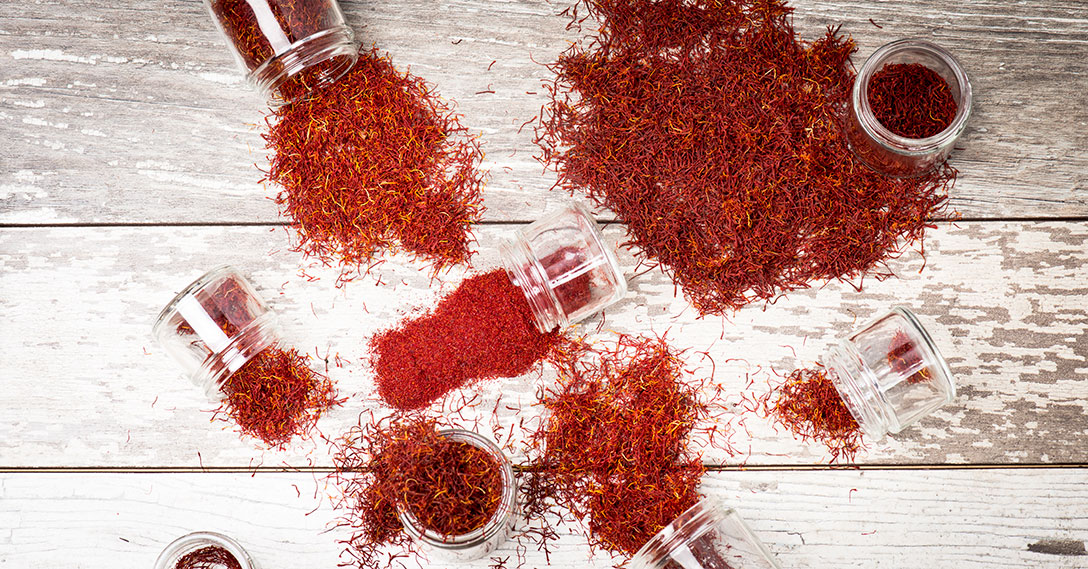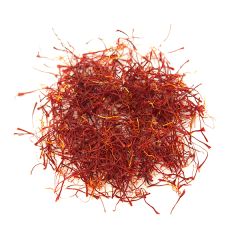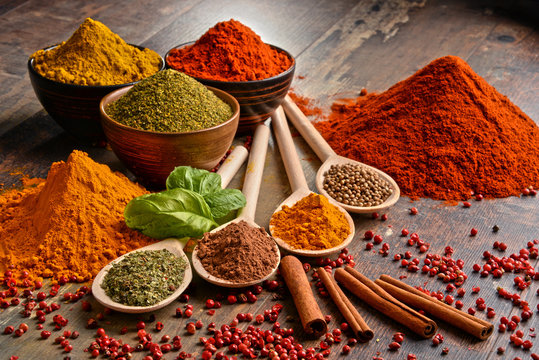- Home
- Cooking Ingredients
- Spices
- Saffron

Saffron
Saffron. The name itself sounds decadent, exotic, alluring. Red strands tinged with yellow; a fiery beauty which humans have found irresistible for millennia. Most people know that saffron is rare and expensive, but many have never had the chance to experience its subtle, sophisticated charms for themselves. For those people, we hope a little history and description of this most prized of all spices will help convince you to take the plunge.
What Is Saffron
Saffron is harvested from Crocus sativus, a flower better known as the “saffron crocus.” Each bloom from this crocus produces three yellow styles, each of which ends with a crimson-red stigma. The combination of golden style and crimson stigma constitute what we know as a saffron thread. These threads are plucked by hand and dried, resulting in a fragrant, beautiful spice that is prized the world over.
Why Is Saffron So Expensive
Now that you know where saffron comes from, you may still find yourself wondering exactly why it is so costly. The answer, in short, is that it is extremely tricky to harvest. The saffron crocus only blossoms during a short period in the fall. Once a flower blooms, it must be harvested that same day, as it begins to wilt almost immediately. Since each flower contains only three delicate stigmas, it takes upwards of 50,000 flowers to yield one pound of dried saffron. Considering the intensive work needed for a comparatively small yield, it is not difficult to see why Saffron is so expensive.
How To Use Saffron
We know what you’re thinking. It’s great to know why saffron is so rare and expensive, but what do I do with it? What does saffron taste like? That question is not quite as easy to answer. Appropriately, given the air of mystery surrounding the spice, saffron seems to have different characteristics to different people. Some will note its sweet, honey-like flavor, while others find it earthy and musky. Yet others are able to detect a balance of the two. Saffron is prized as much for its color as its flavor, imparting a rich, golden hue onto recipes ranging from saffron risotto, to a variety of curries, to classic French bouillabaisse. It can even be used desserts, such as pudding, cakes, and sweetened rice. If you are worried about the expense, don’t fret! A little goes a long way. For most dishes, you will only need 1-3 saffron threads to get the desired effect.

Types of Saffron
Just as saffron is prized in many parts of the world, it is actually harvested in a few different places as well. While the general characteristics of saffron will not vary much, there are some distinct qualities to each variety, and connoisseurs tend to have their own preferences.
Types Of Saffron
To help you get started on the path to finding your own favorite, let’s take a look at the three types of saffron we proudly offer.
Iranian Saffron
In Iran, saffron is cultivated by professional growers, who don't use chemical materials for cultivation. Sargol saffron has no synthetic pesticides, preservatives, food additives or colorings. Our Iranian saffron is Sargol grade. Sargol literally means “top of the flower,” which denotes the fact that it doesn’t contain any of the yellow style. It is made up entirely of the red stigma of the flower, which is where saffron gets most of its flavor and aroma. The result is the highest quality saffron available to the public.Greek Saffron
Saffron from Greece is irreplaceable: musky, sweet, floral, bitter, and bolder than other saffron. The flavor is strikingly earthy, with notes of honey and violet. Greek saffron is generally earthier and a touch more bitter than other types of saffron, but the honey notes are much more intense.Spanish Saffron
Called Azafran by the Spanish, this variety of saffron spice is mellow, sweet, and floral. The aroma is irreplaceable: musky, honeyed, floral, bitter, and fierce. You’ll find the perfume to be hypnotic. The flavor is penetratingly husky, earthy, with notes of honey and violet.
- Saffron, Greek (Select)Out of stock
- Saffron, Iranian (Sargol)Out of stock




